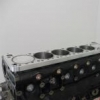Project Rb31dett. The Development Of My Open Deck Rb Engine And The Quest For More Torque!
Announcements
-
Similar Content
-
Latest Posts
-
That would be a rarity. You can emulate the function of the stalk just by bridging the appropriate pins in the connector. If you can make it function correctly by doing so, then the wiring etc is OK and it is the stalk.
-
By SLVRBAKSLPZ · Posted
I've had these LEDs and a LED EP34 flasher relay in the car since 2020. No fuses were popped either. I'll multimeter and clean off the tarnish tomorrow. From how the lights were acting after I diddle the stick make me lean towards a stalk problem. -
Are you sure you can use LEDs in the indicator lamps? On a car that old? It doesn't work on many old cars because the indicator relay can't cope with the wrong impedance out at the lamp positions and the LEDs will happily light up even with minimal current flowing through the indicator relay. And when I say "indicator relay" I mean the flasher, not a relay relay. Beyond that, I would say that you have caused yourself a wiring fault and that you would be well advised to work through the wiring diagram and the actual loom with a multimeter.
-
By SLVRBAKSLPZ · Posted
Did some more messing around with this issue. I think the stalk is the problem. i wiggled it around a bit. When i went to put the signal up for a left turn, all the signals blinked lol. I'm gonna try and clean the tarnish off the copper and see if that works. this still doesnt explain why the left side/fronts are constant on ACC/On after i pulled the stalk. may be a ground from the stalk thats causing it. IDKkKkKk. I'll report back -
Impressive power for a small rear housing. 👌
-




Recommended Posts
Create an account or sign in to comment
You need to be a member in order to leave a comment
Create an account
Sign up for a new account in our community. It's easy!
Register a new accountSign in
Already have an account? Sign in here.
Sign In Now